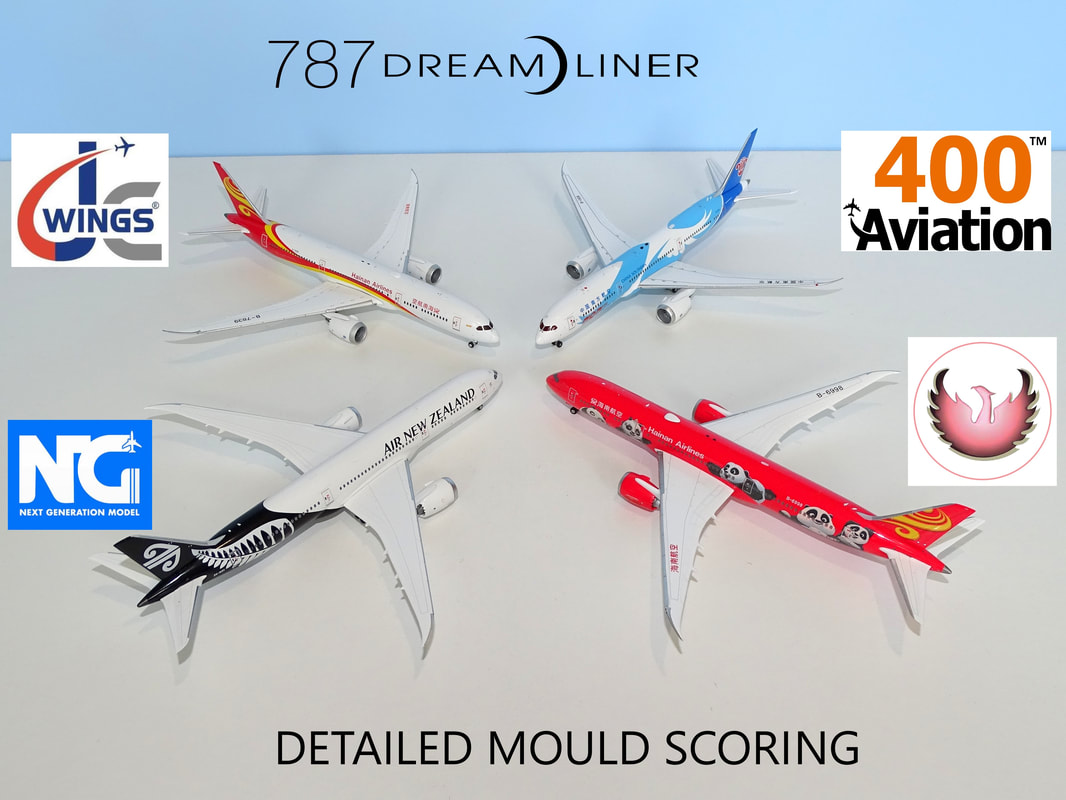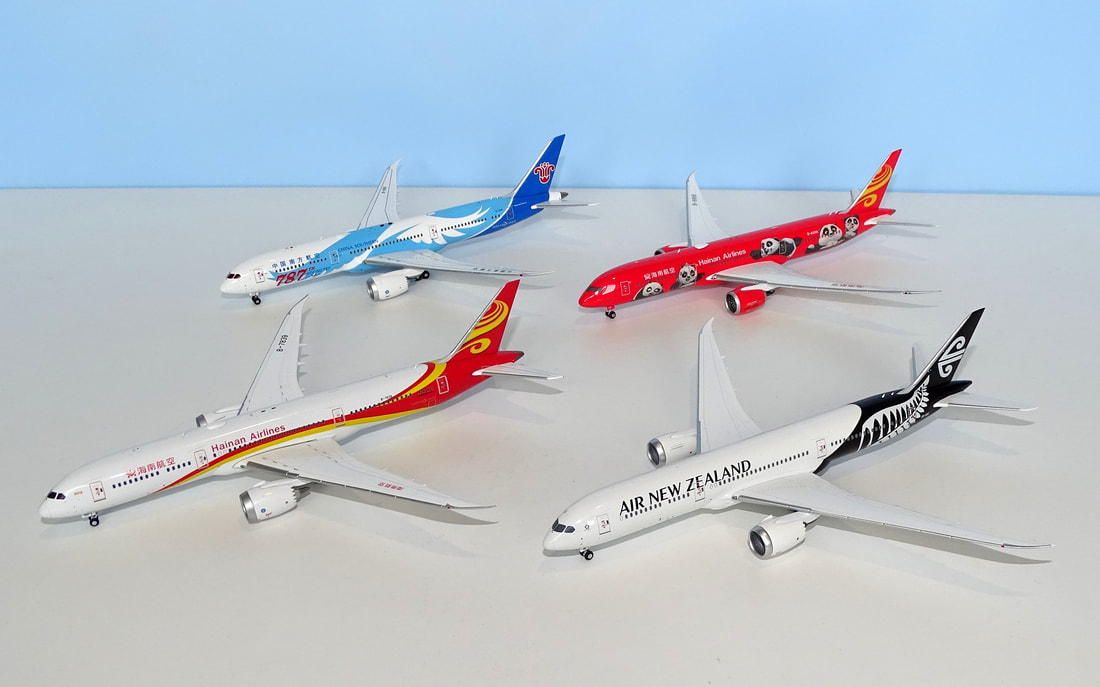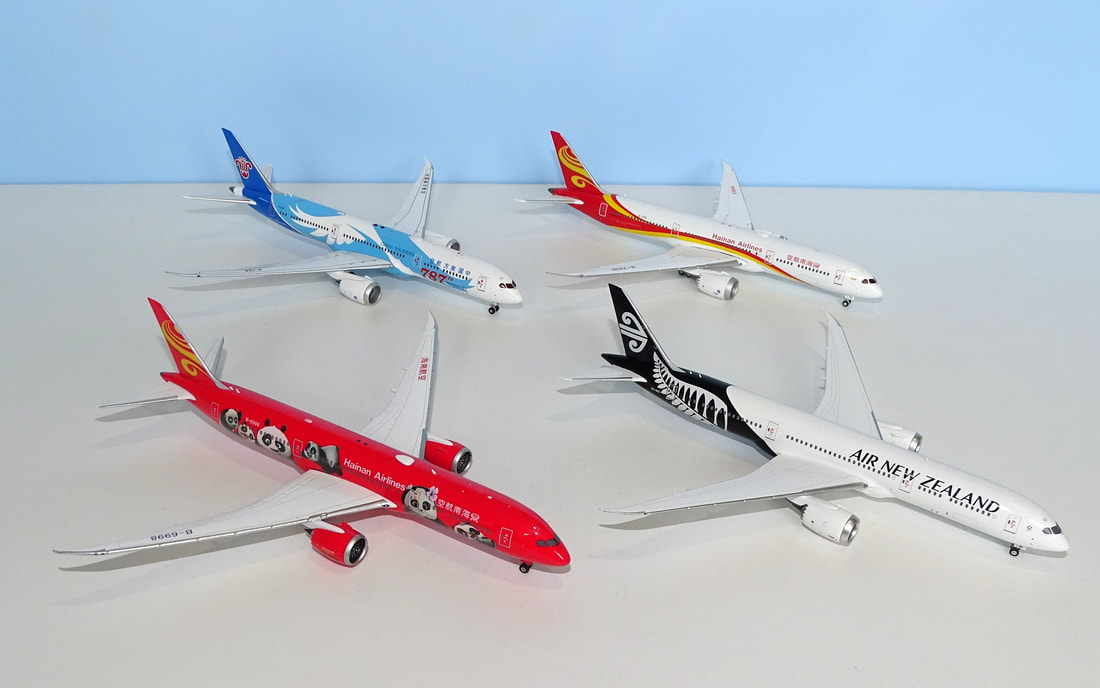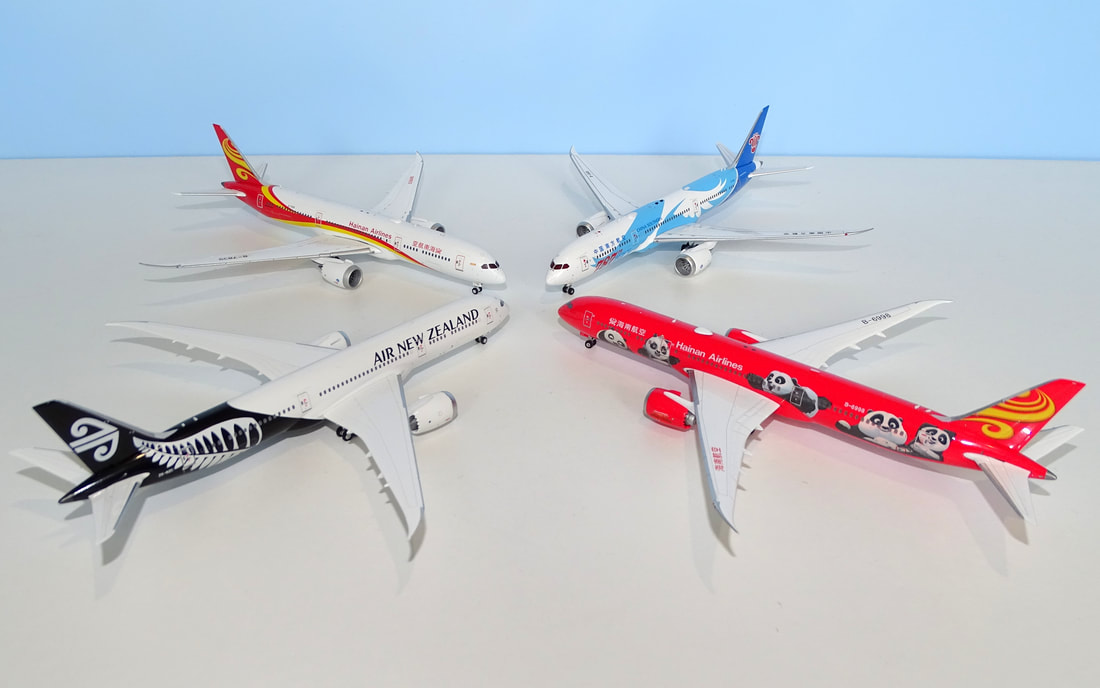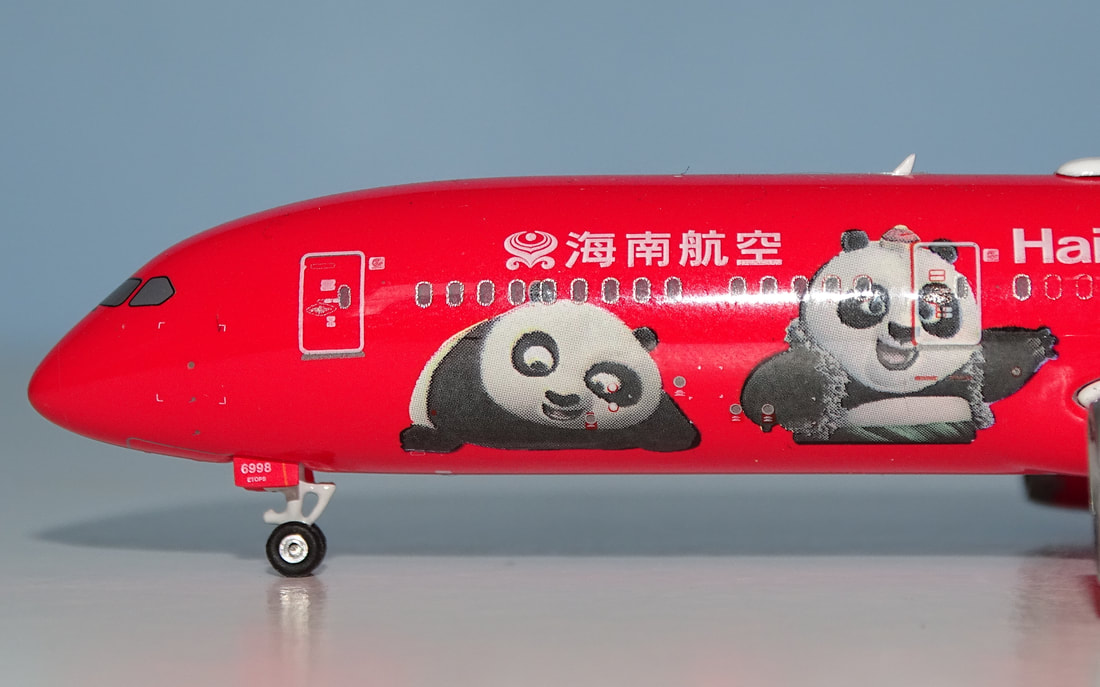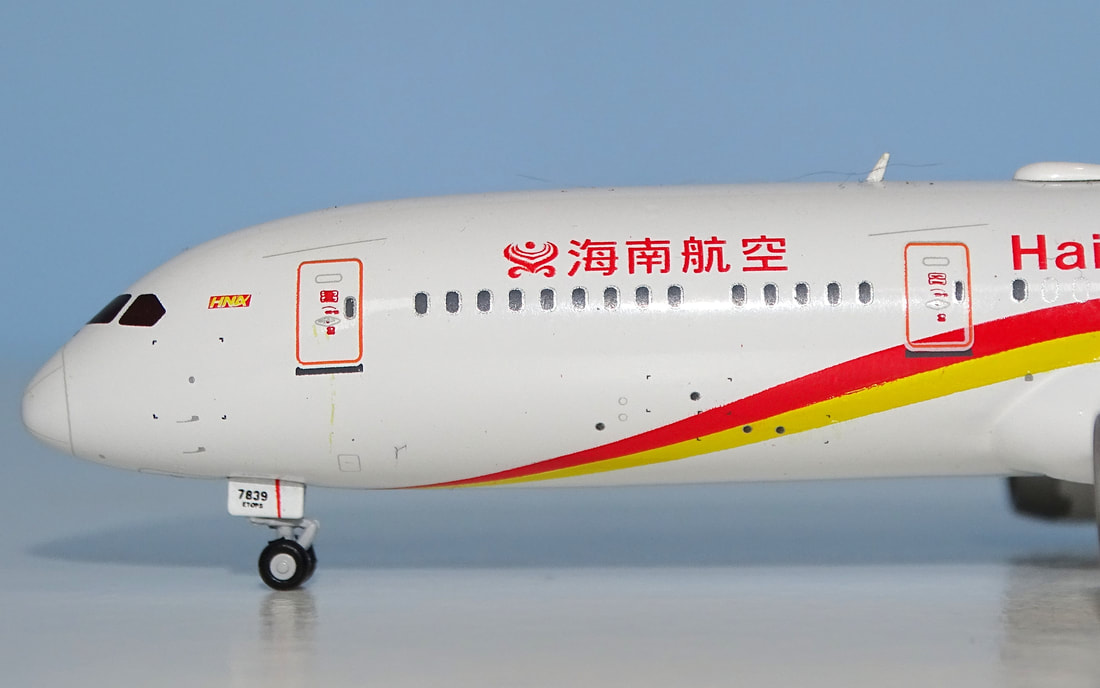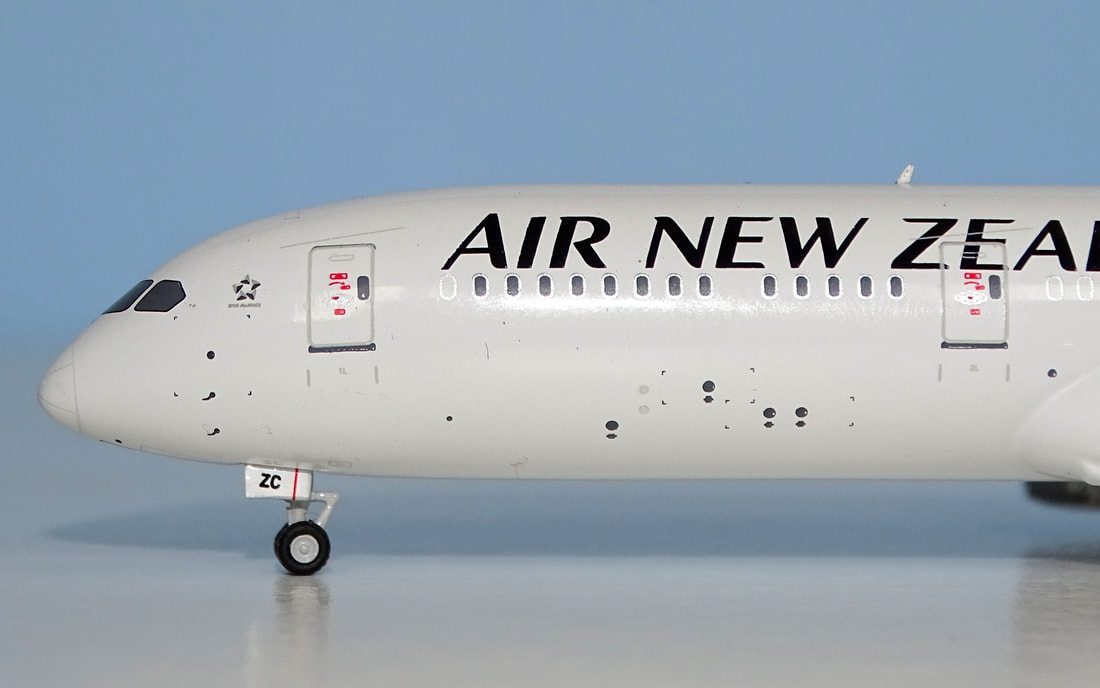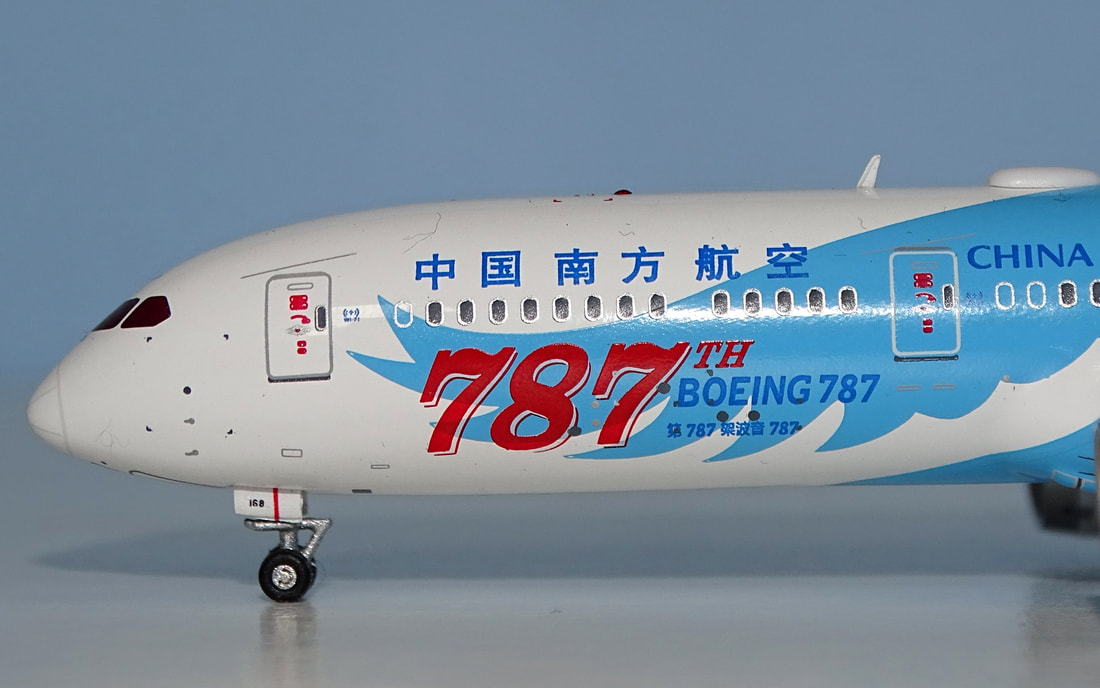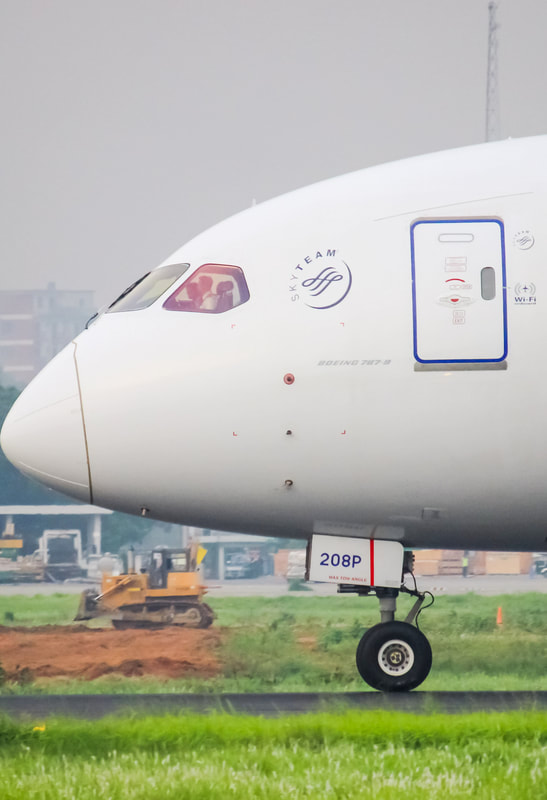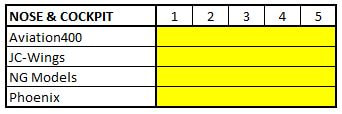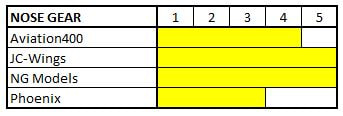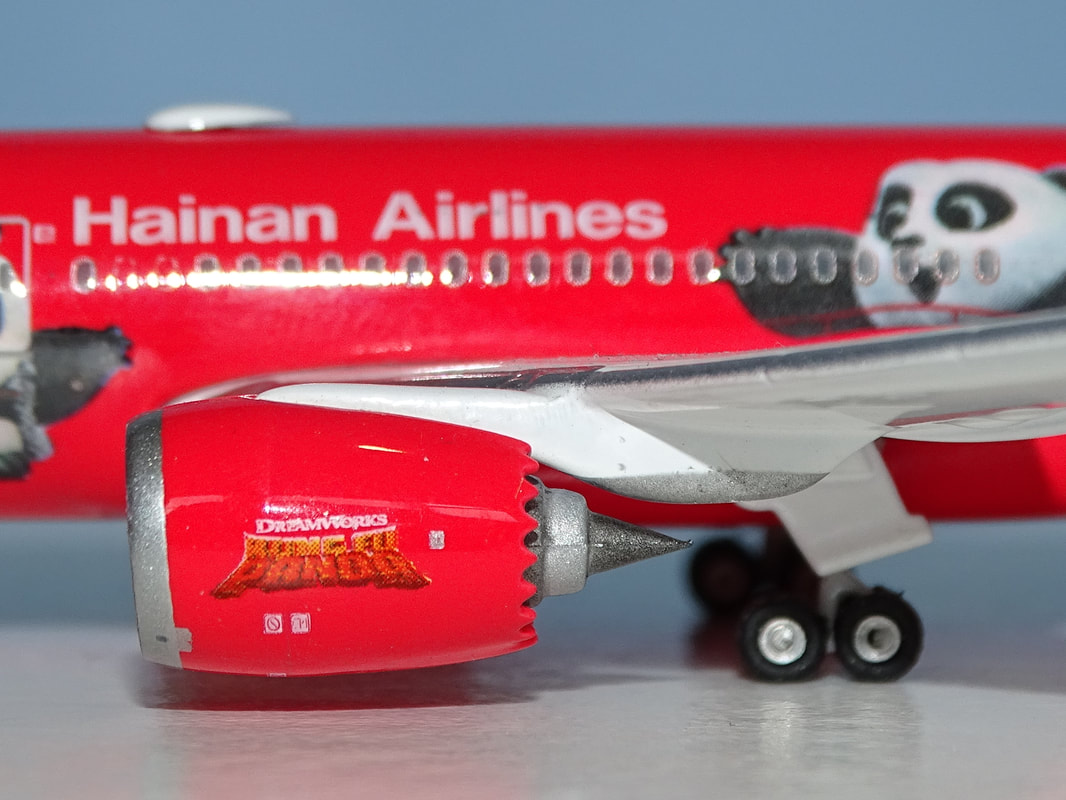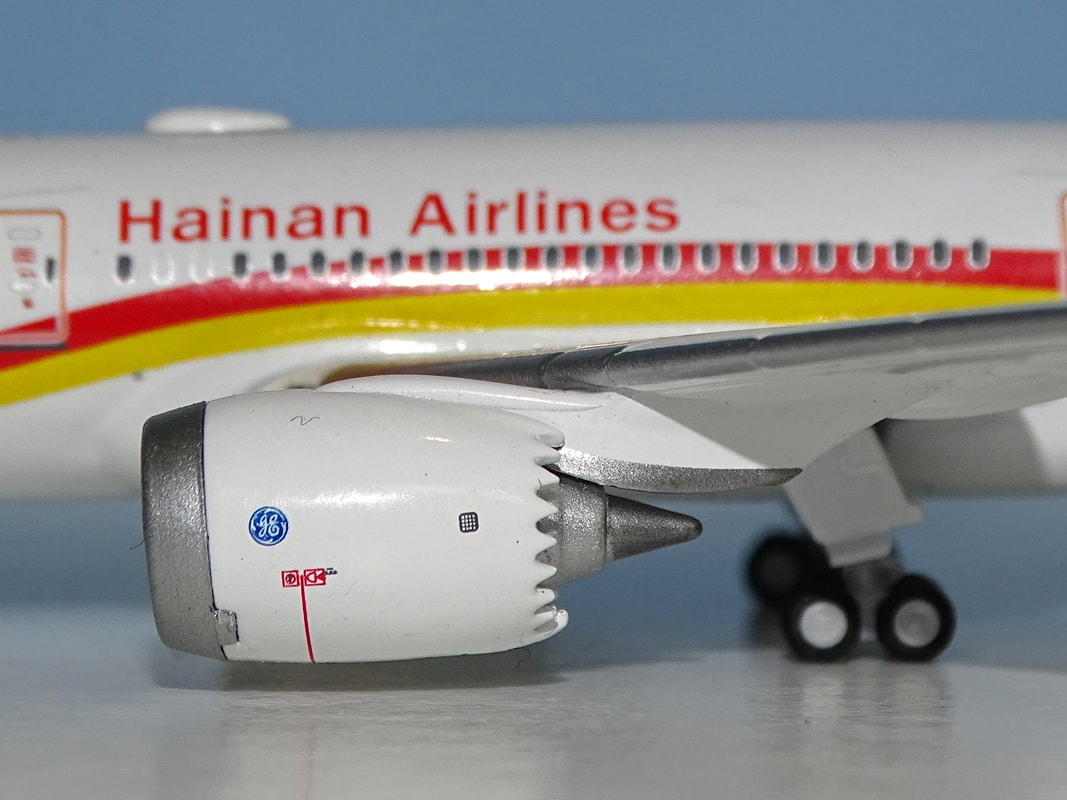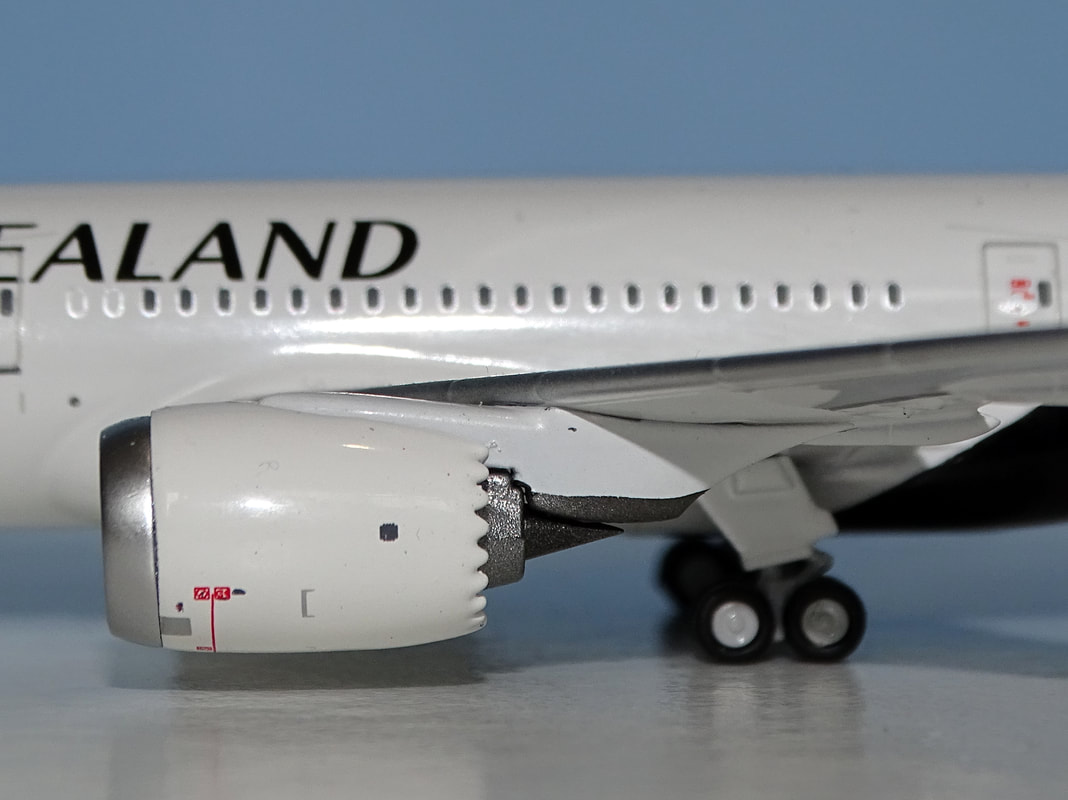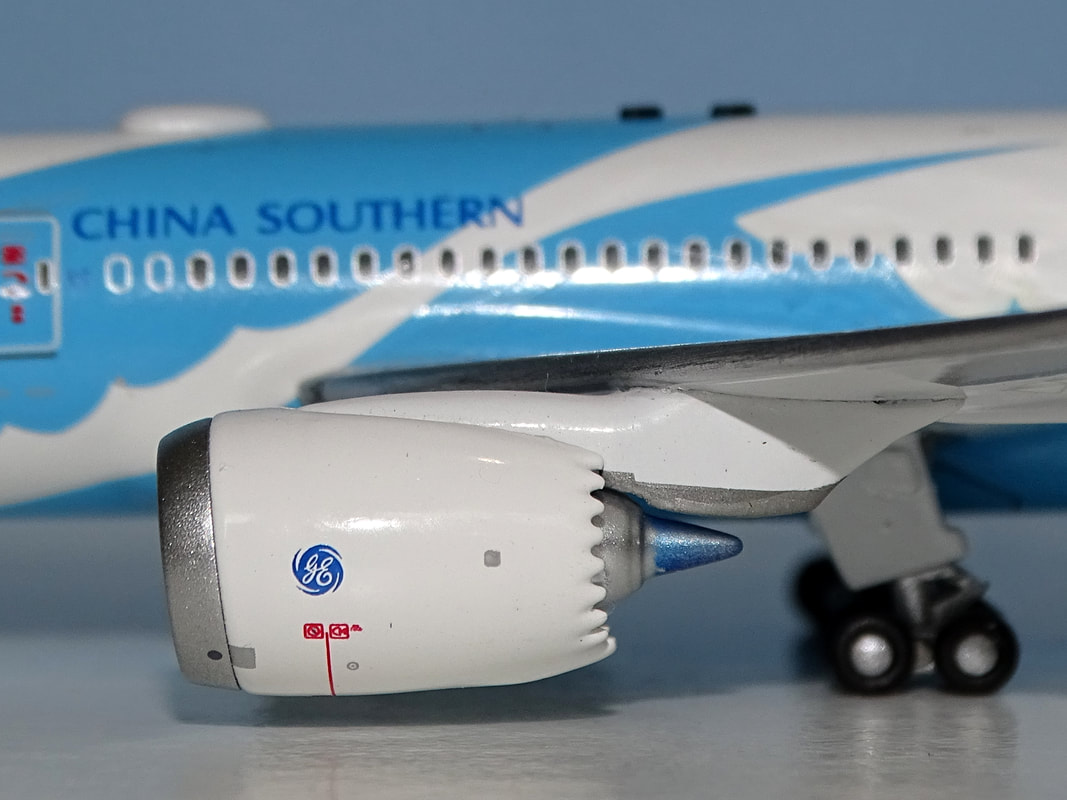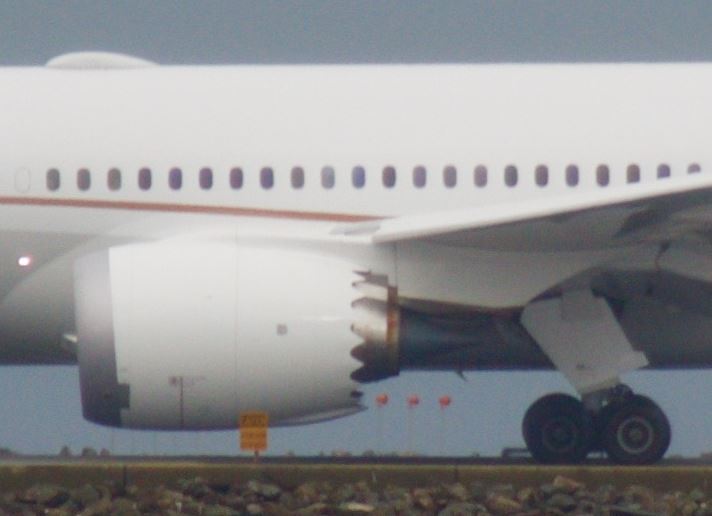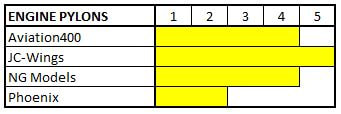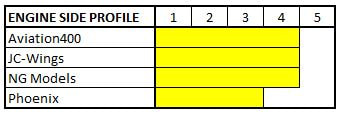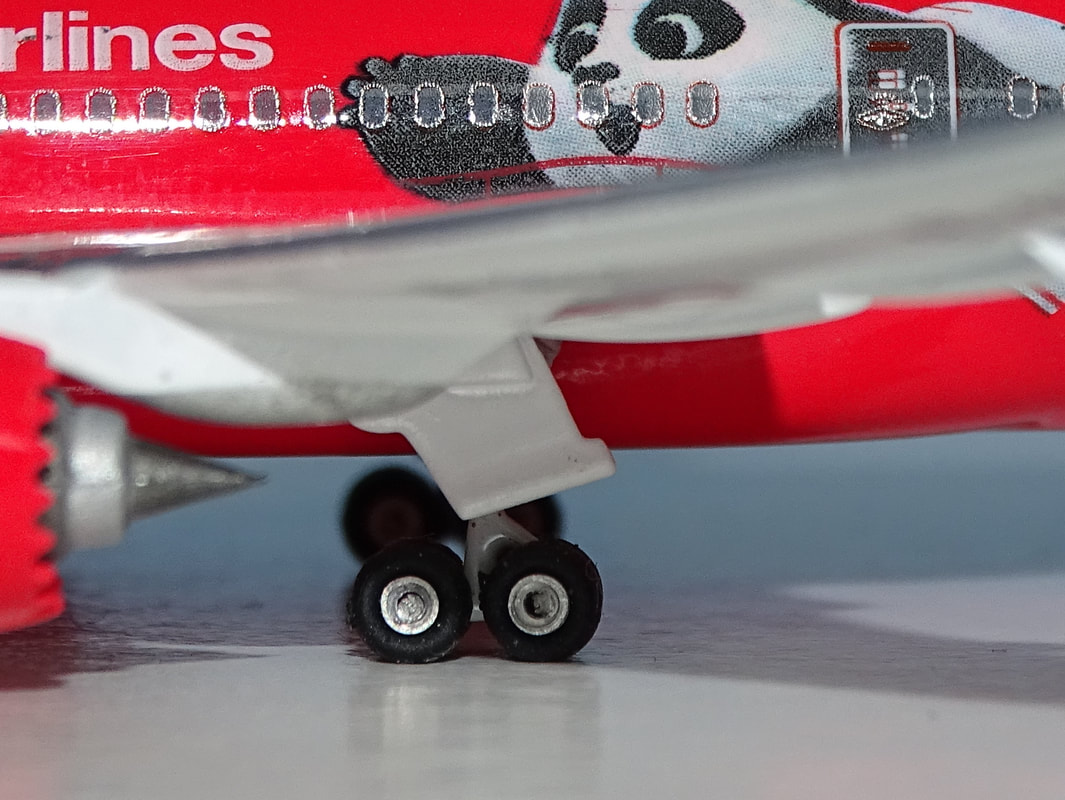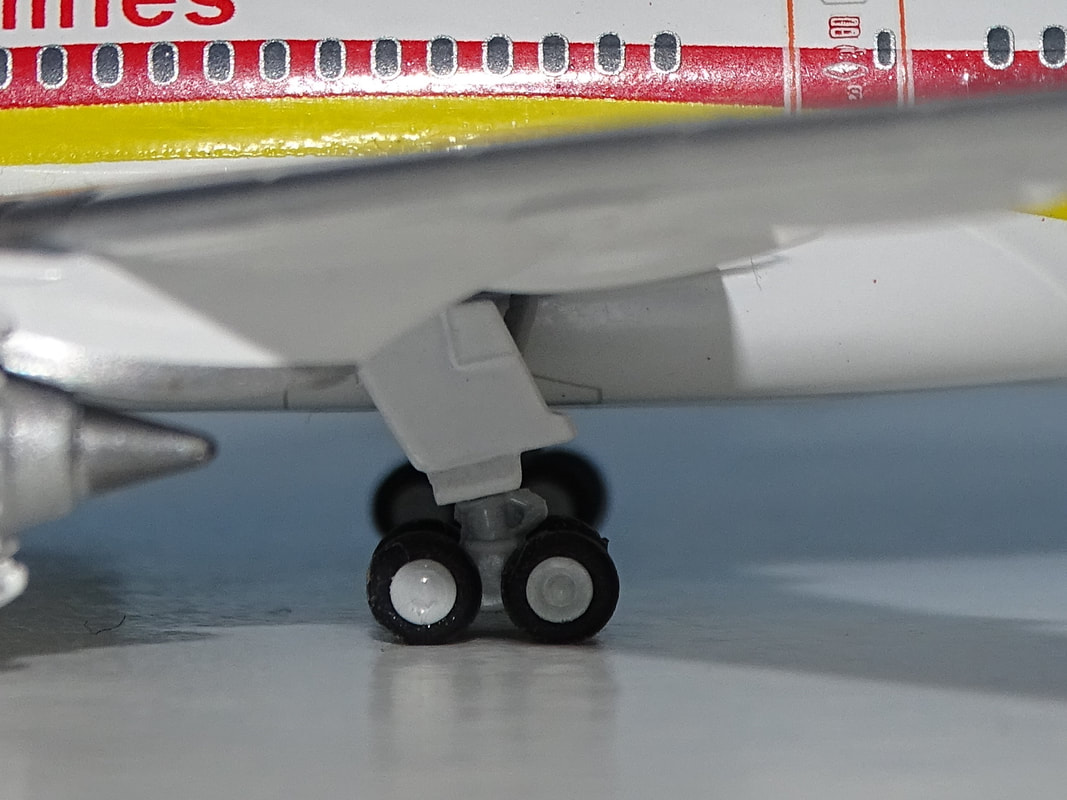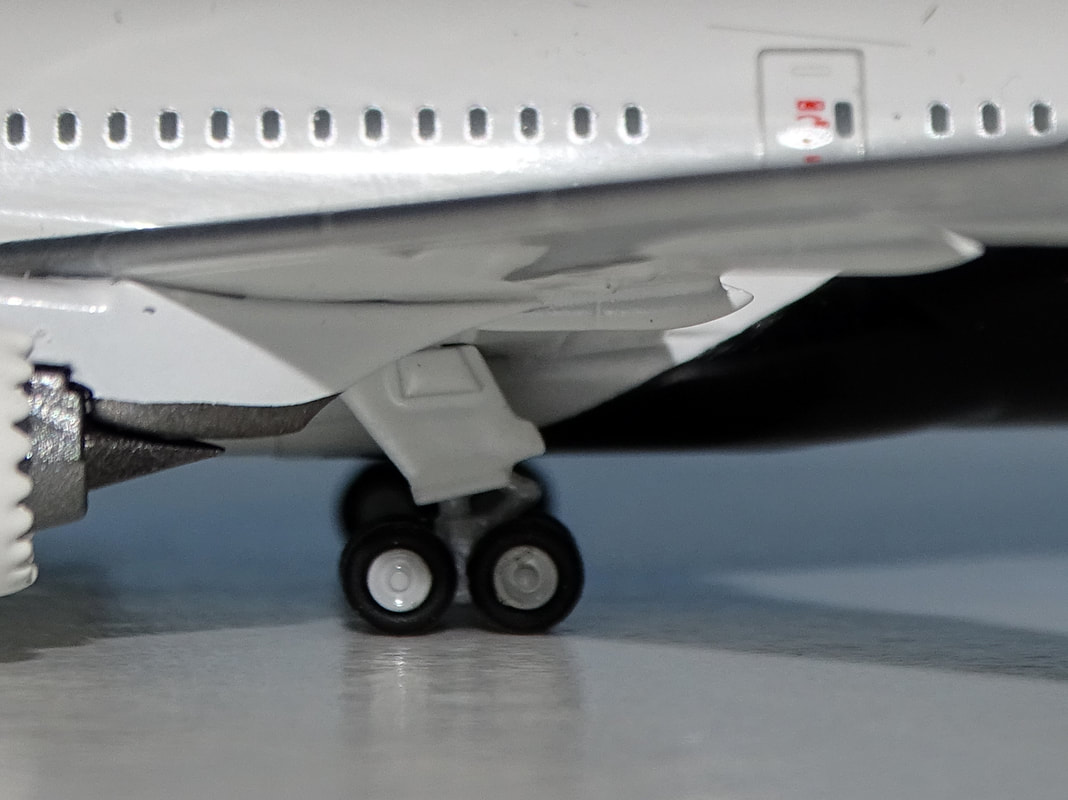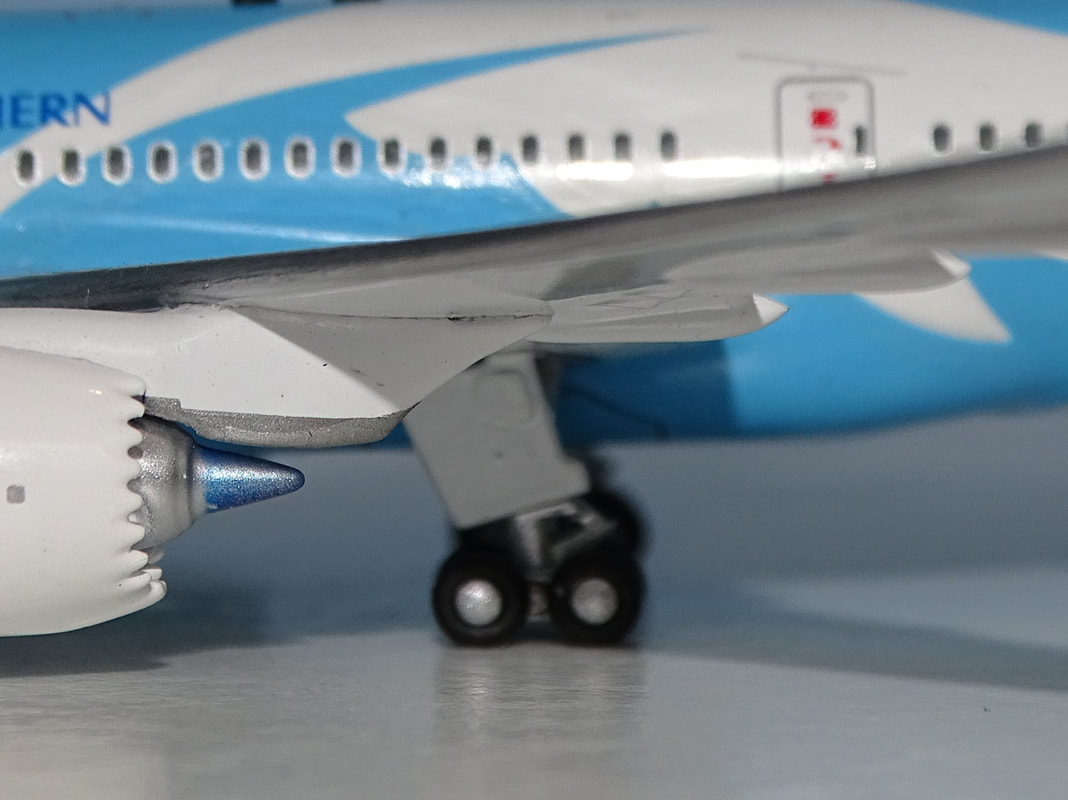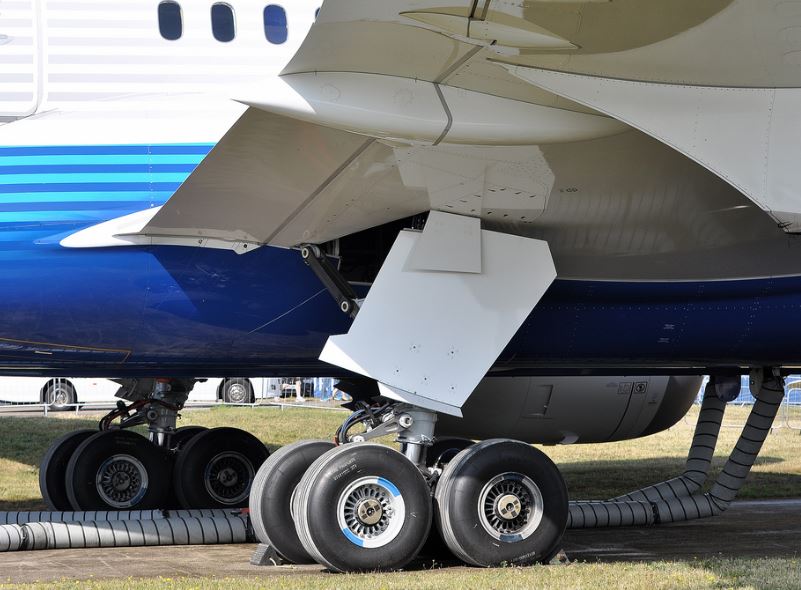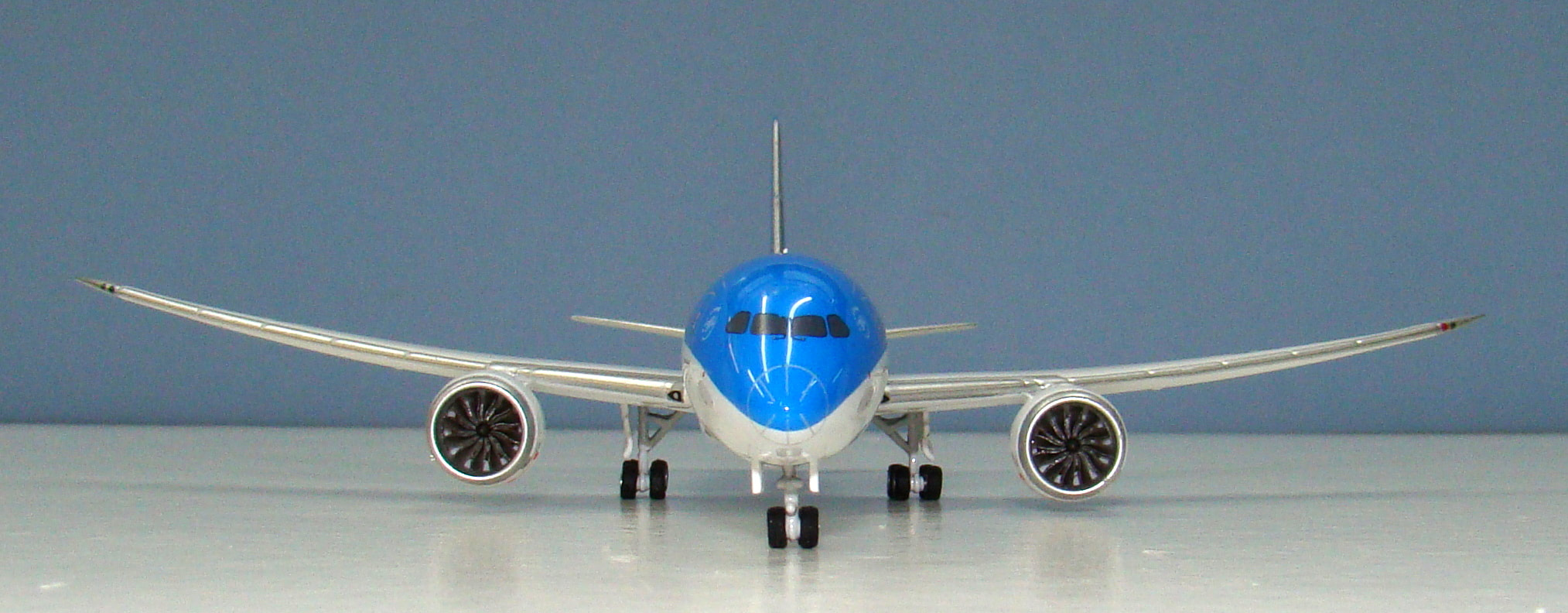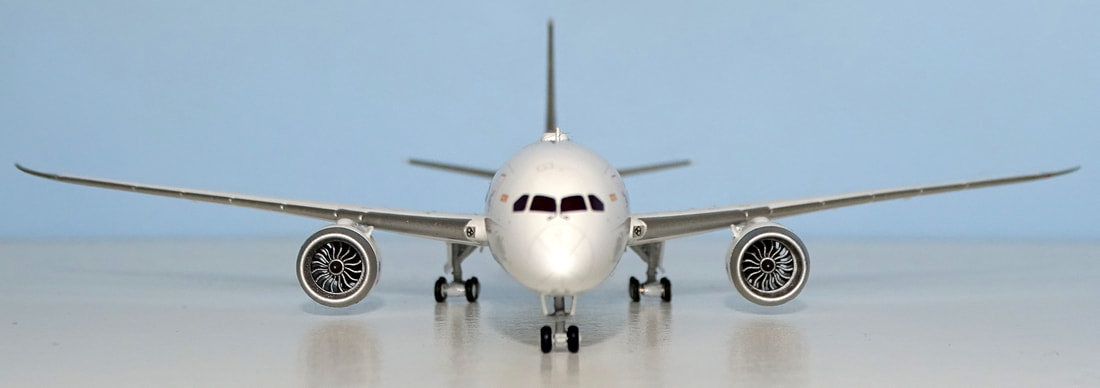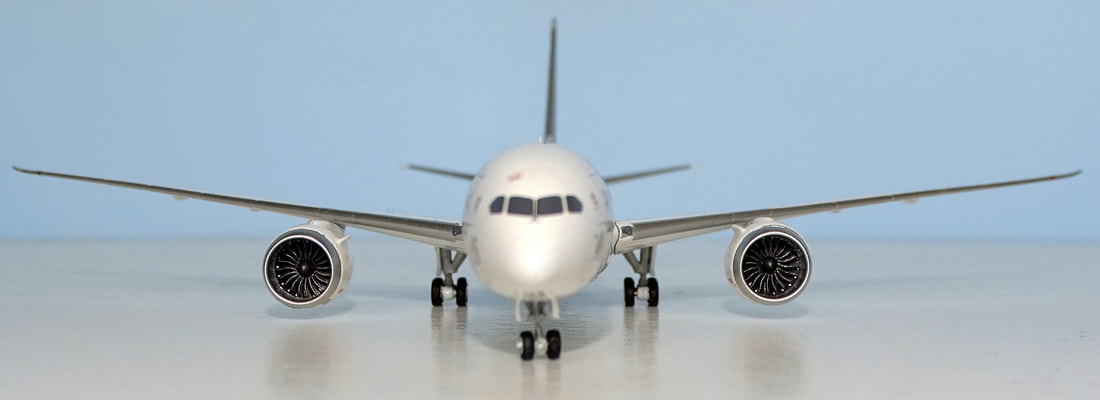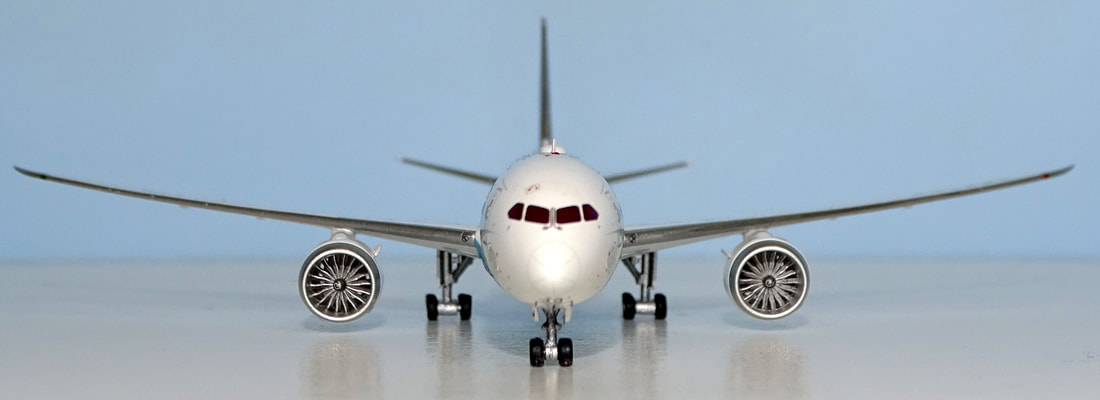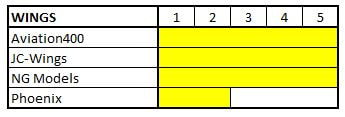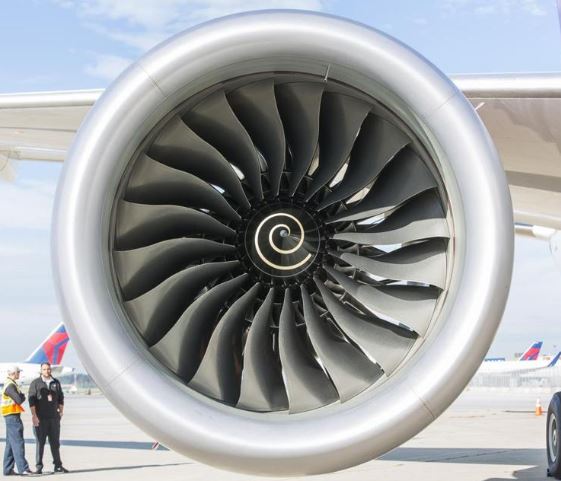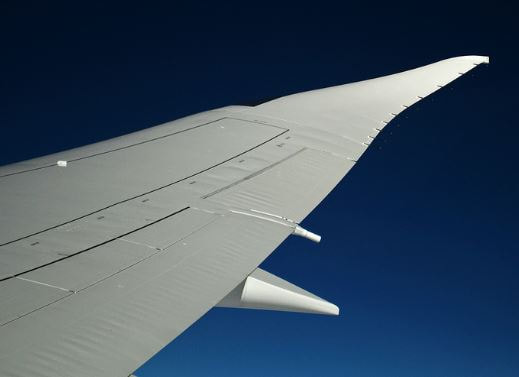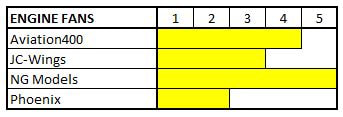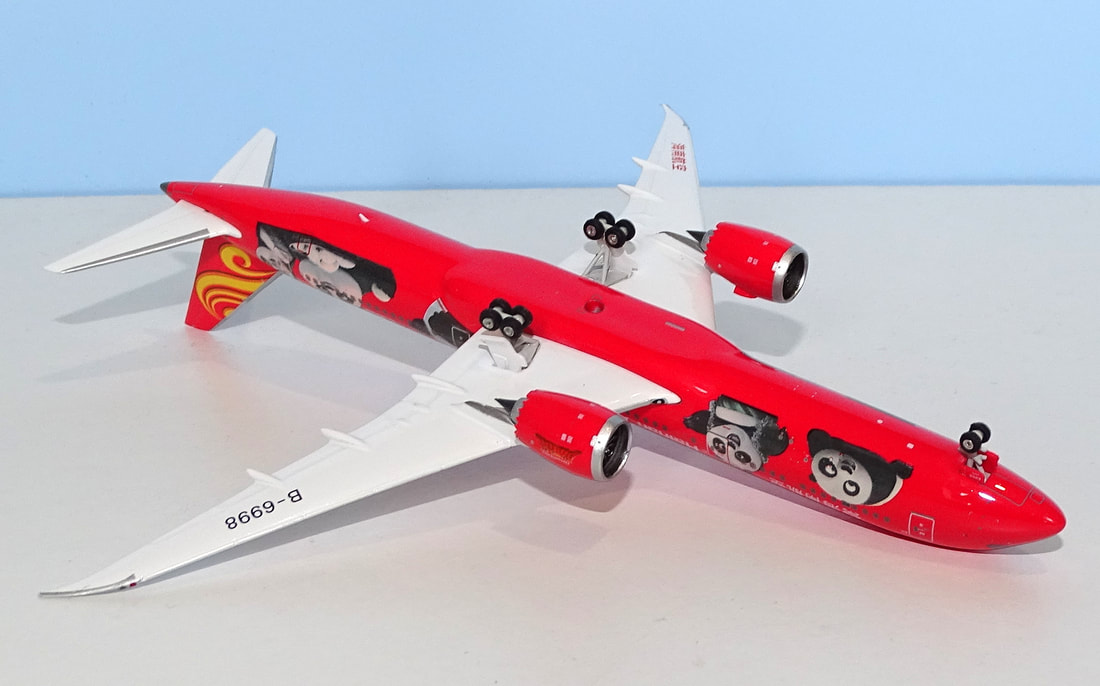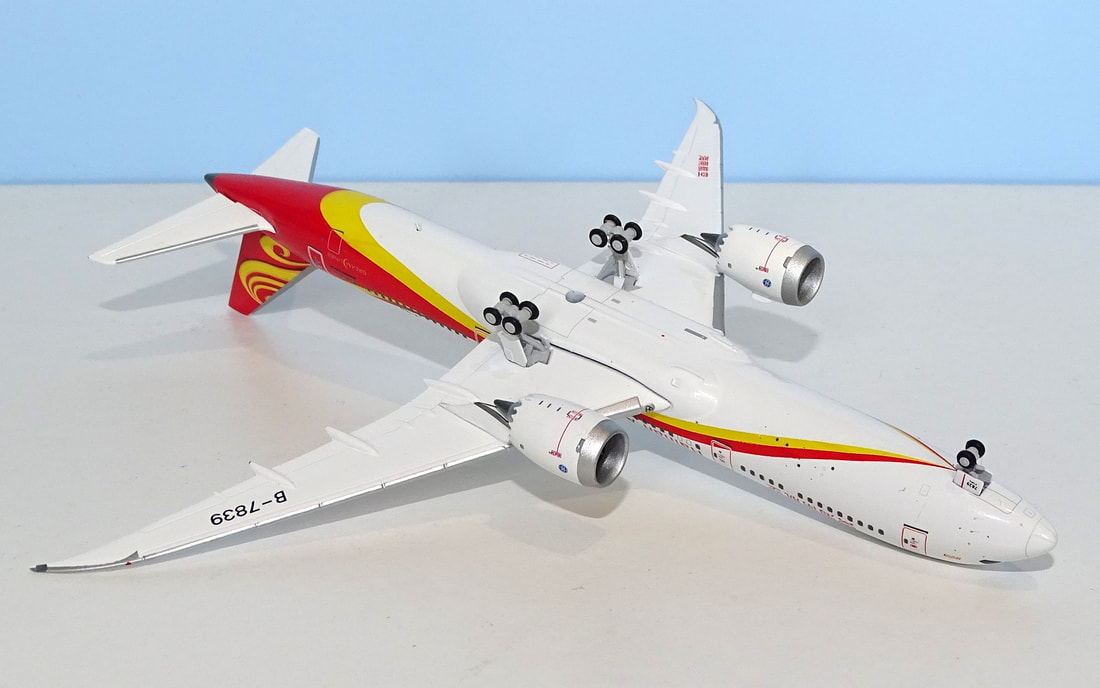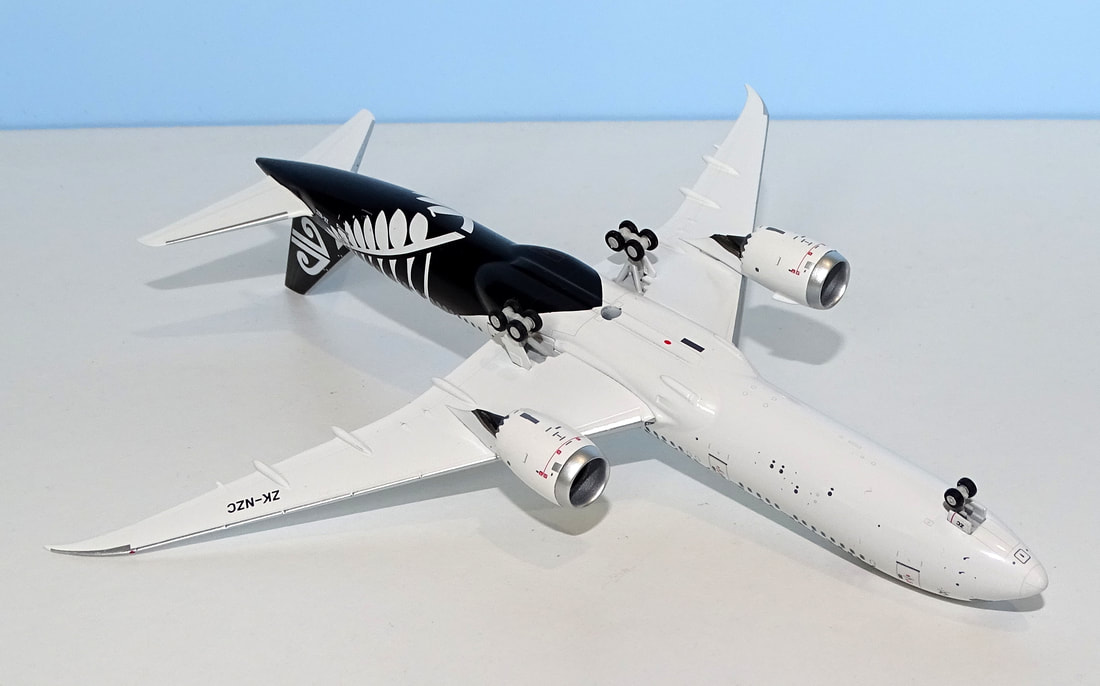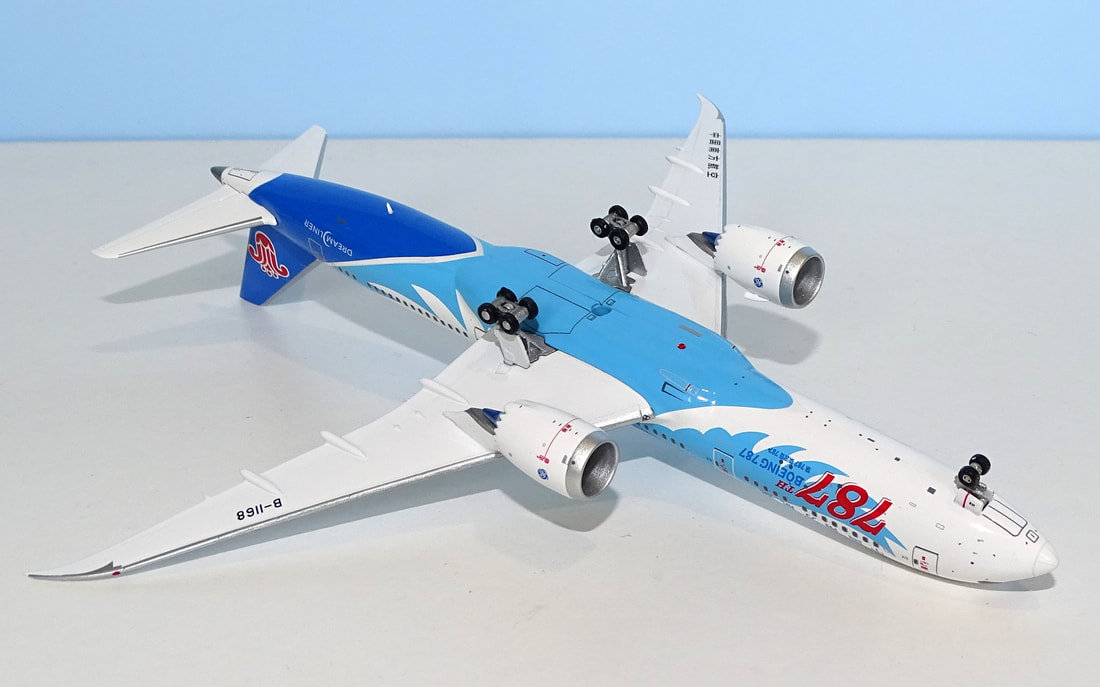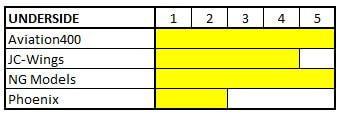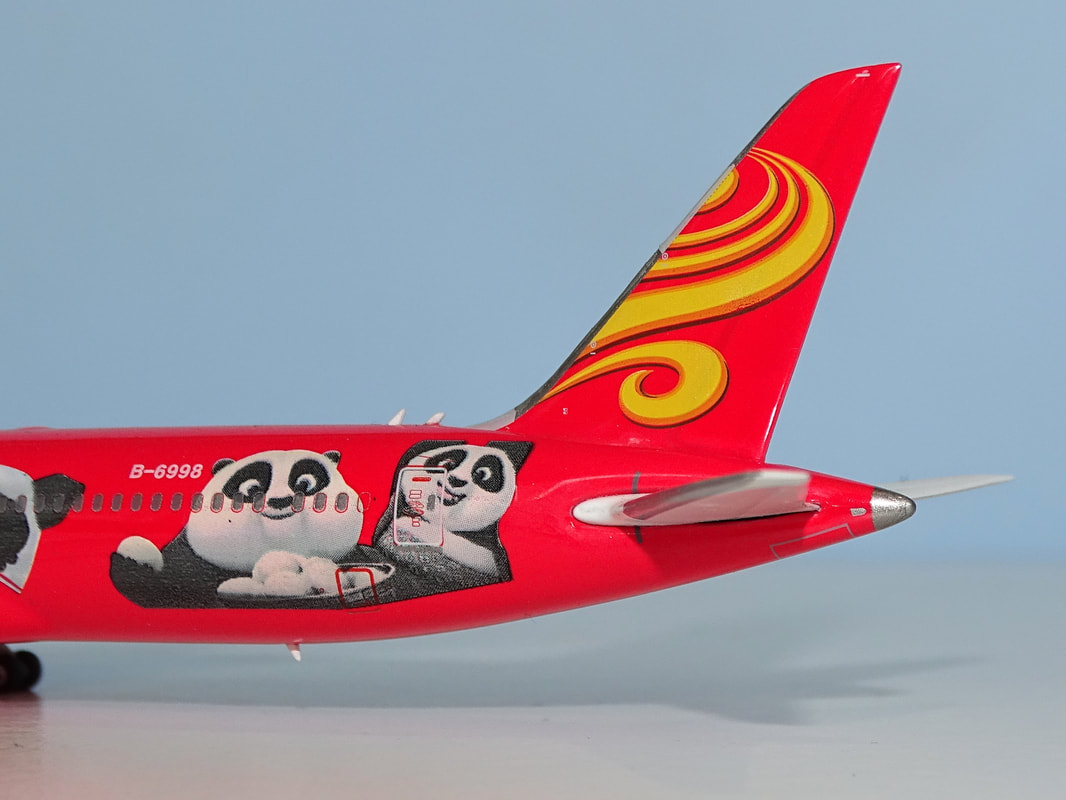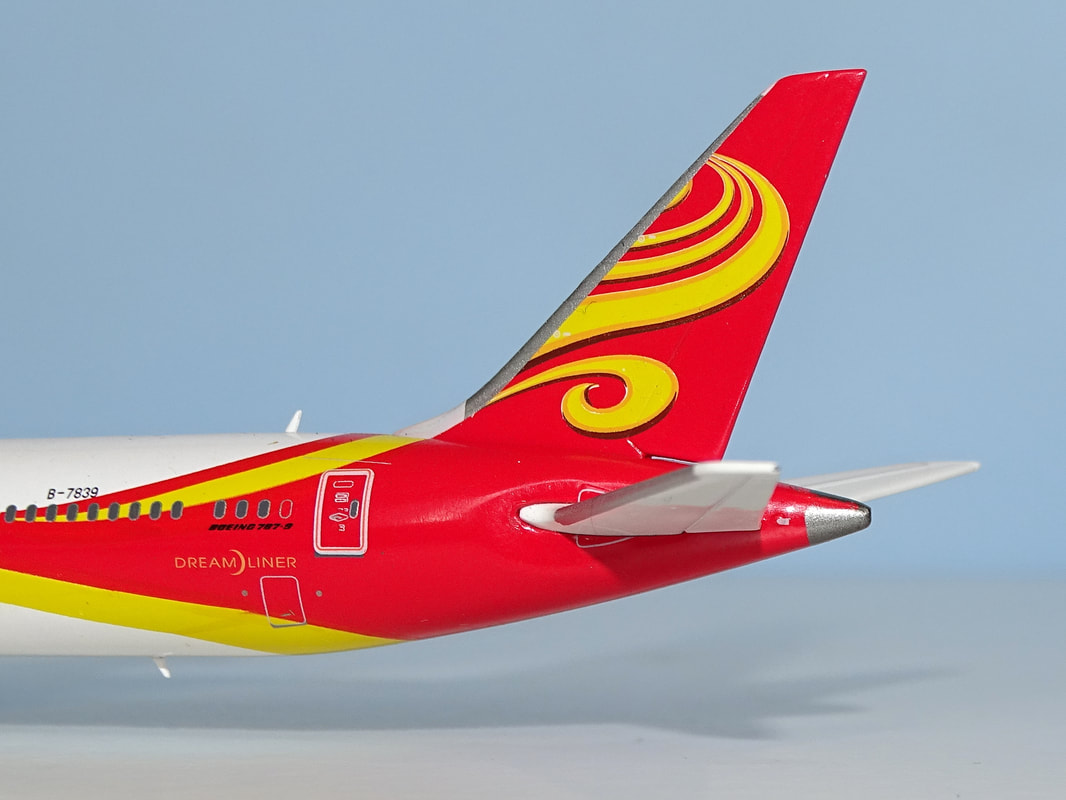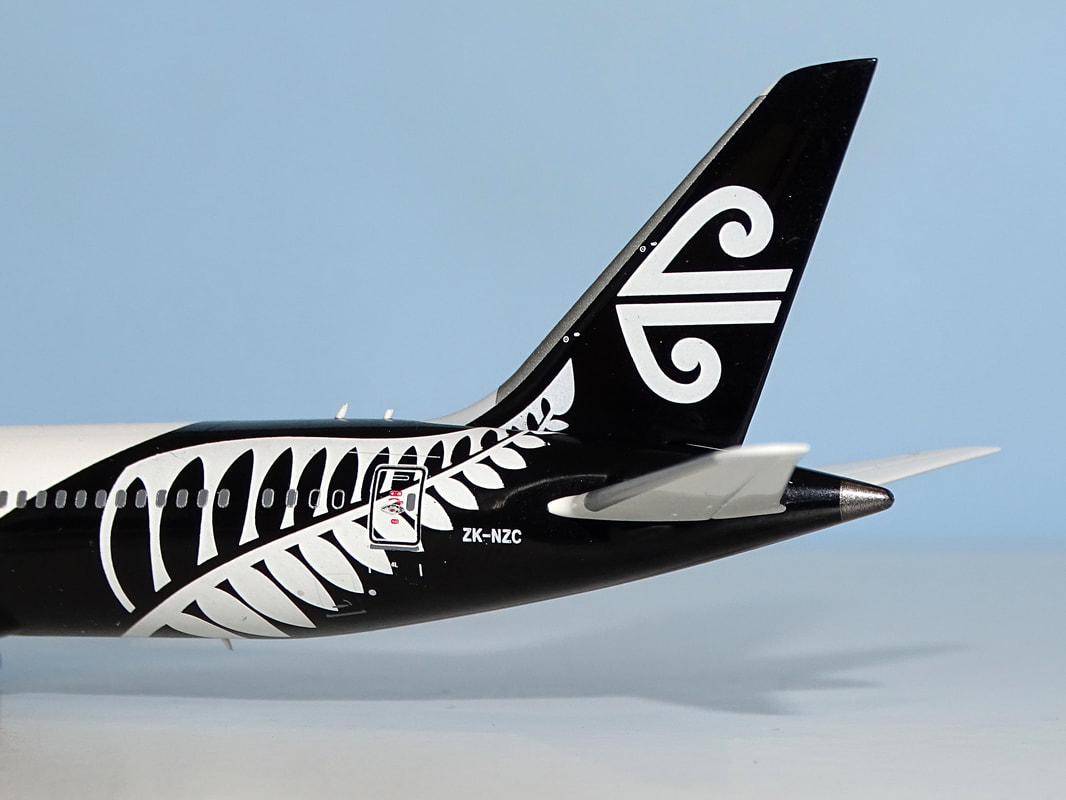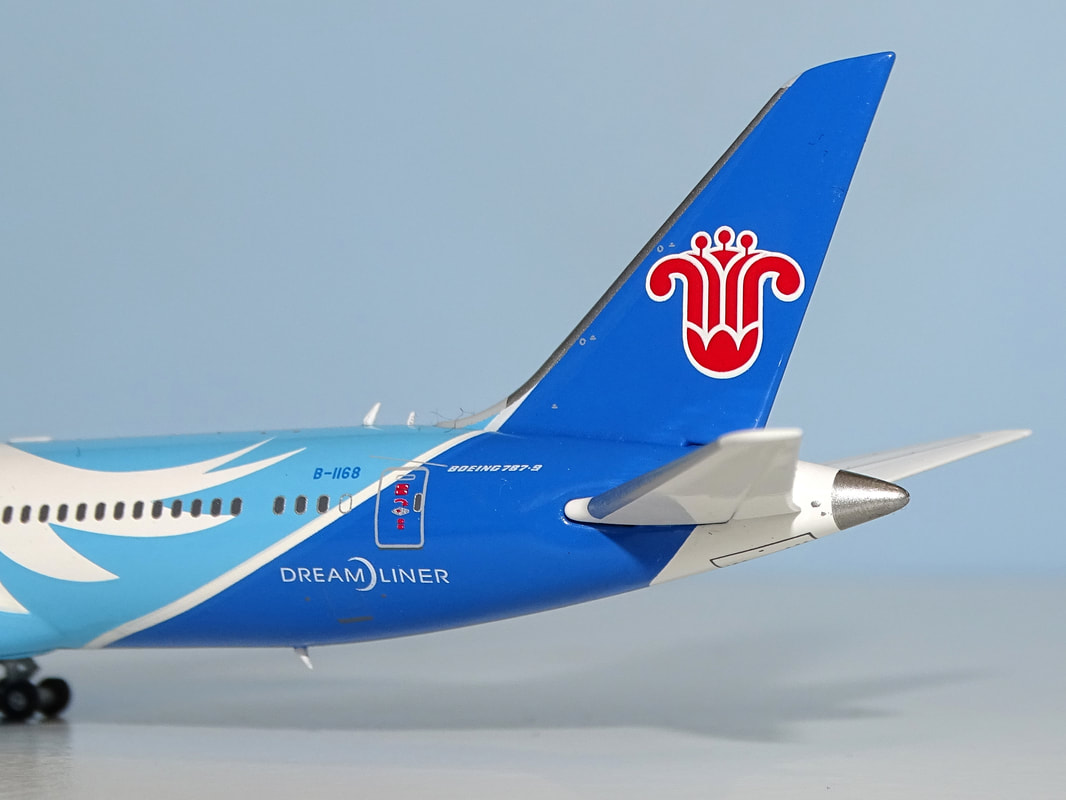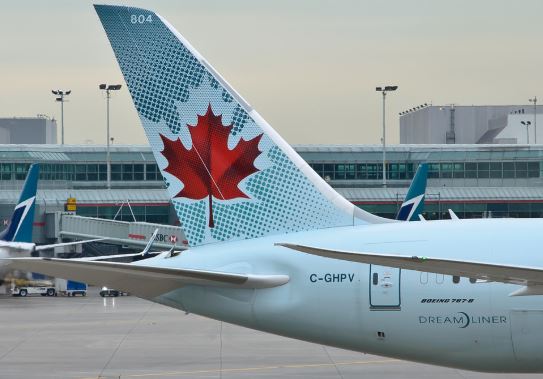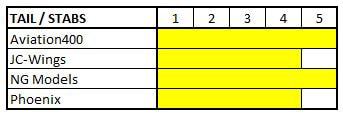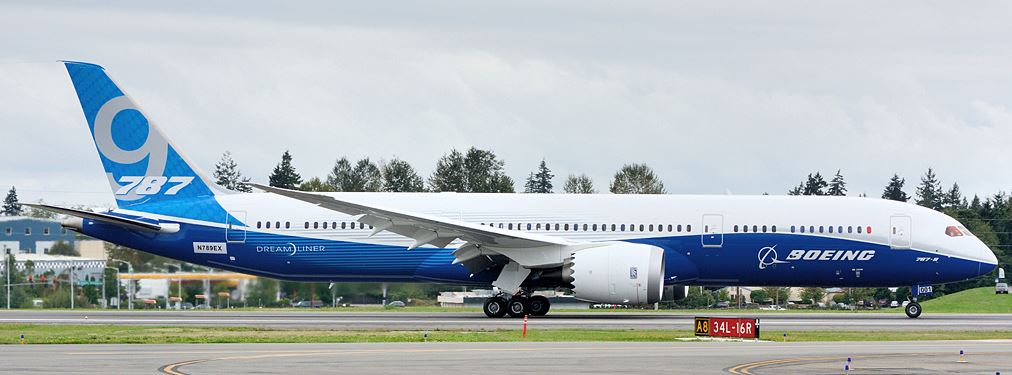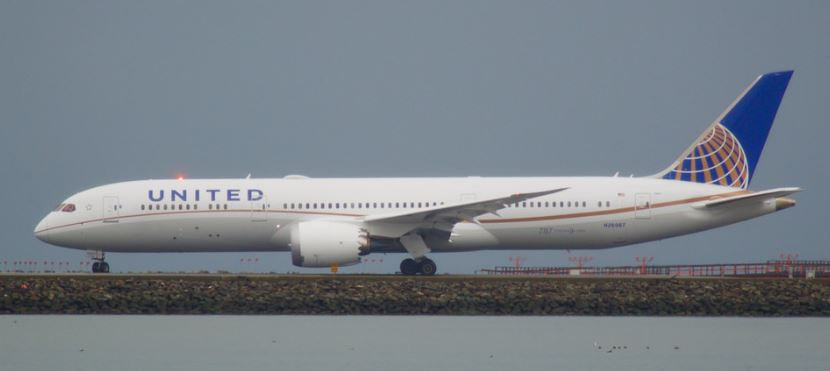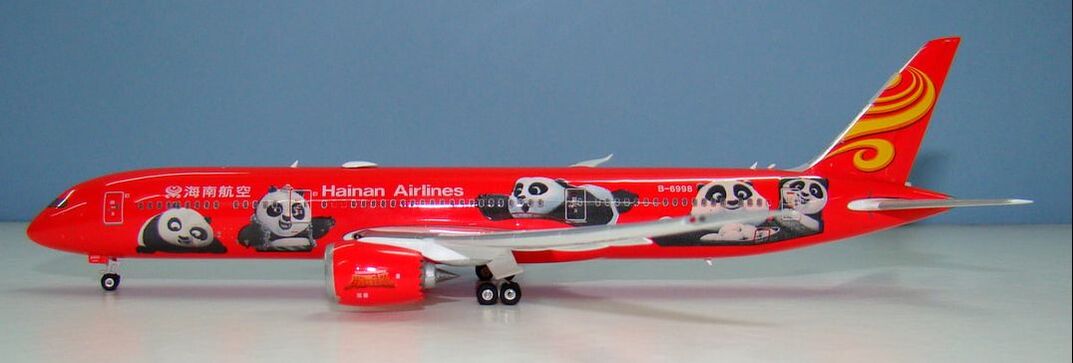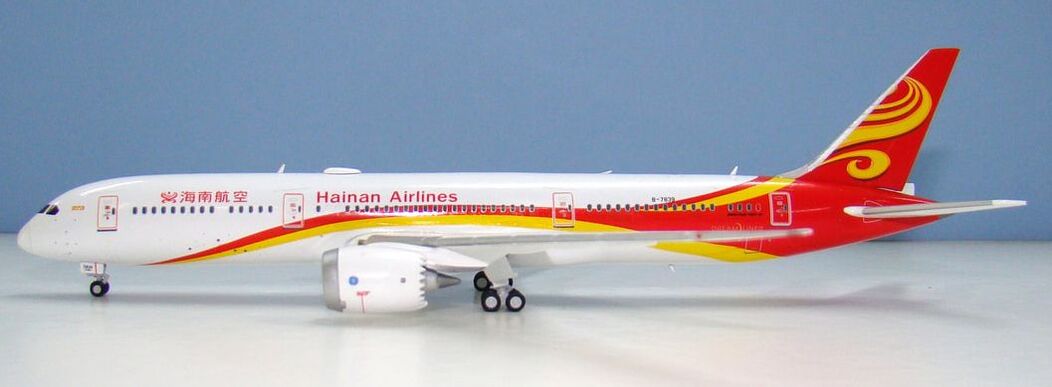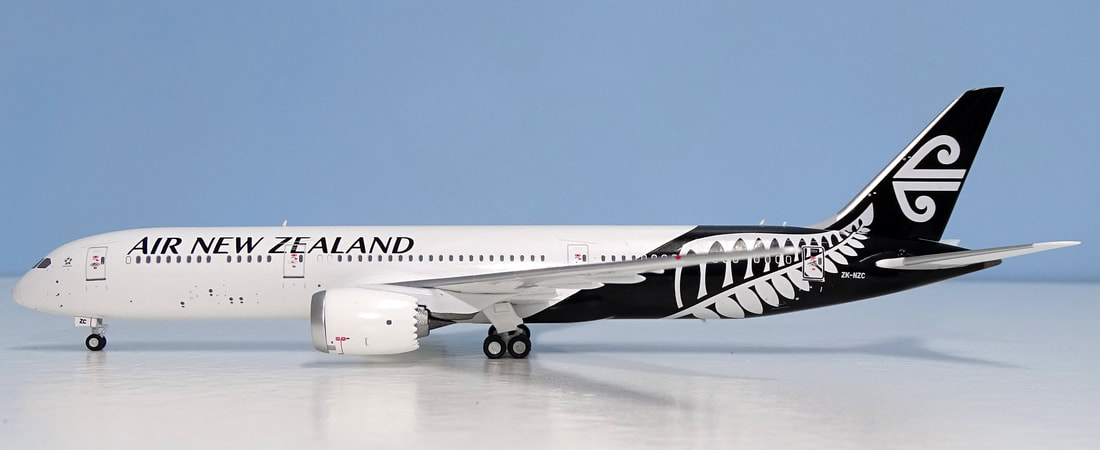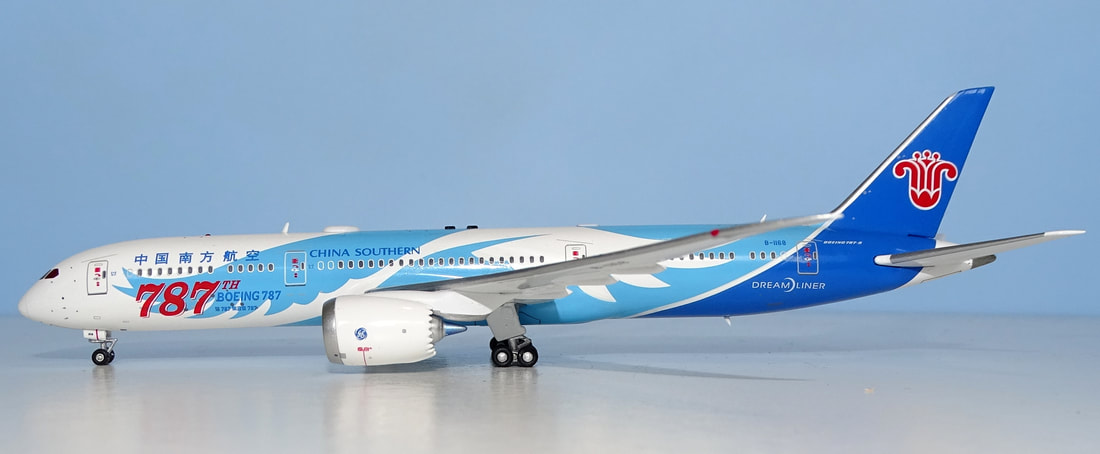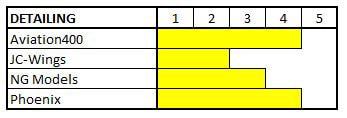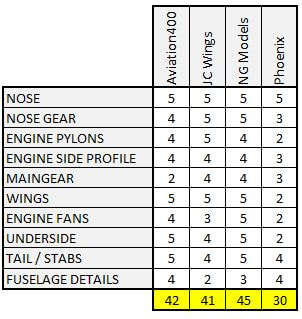Boeing 787-9 Detailed Mould Comparison
Updated: September 2022
When I wrote my original detailed mould review for the Boeing 787-9 back in November 2018 there had only been 142 models made and the NG Models mould was new on the scene. Nearly four years later and there have been nearly 350 made and competition is more intense than ever.
For my original review see here:
Since then the old cradle mount Gemini mould has almost disappeared. I say almost because the recent LATAM release made only a month or two ago was still using it. They mainly use the JC Wings mould now and there surely can't be many more of these old models sitting in the legendary Gemini warehouse awaiting their release? I certainly hope not because obviously it is miles behind the more modern moulds being talked about here.
Since the original review NG Models has also updated their mould a few times, altering and improving details such as the nose and undercarriage. Lastly Aviation400 have just released their own new mould, which is the primary stimulus for this review.
I should also point out that JetHut have also released a 787-9 recently, which I have reviewed before, but is clearly not going to compete here as it is aimed at a different market. I won't therefore review it here, however if you want to see how it fares against the old Gemini and Phoenix see:
I should also point out that JetHut have also released a 787-9 recently, which I have reviewed before, but is clearly not going to compete here as it is aimed at a different market. I won't therefore review it here, however if you want to see how it fares against the old Gemini and Phoenix see:
The moulds to be compared in this detailed comparison will be the following:
All models are from my collection.
- Phoenix Models 2006 Mould - Hainan Airlines (Red Kung Fu Panda Clrs)
- JC Wings 2016 Mould - Hainan Airlines (Standard Clrs)
- NG Models 2018 Mould - Air New Zealand
- Aviation400 2022 Mould - China Southern Airlines
All models are from my collection.
As per usual the review will take the form of a comparison of various areas of each mould to the real aircraft, with a score out of 5 alotted for each mould for each area. Adding the combined scores together gives you the winner. I am expecting this review will illustrate that there is a strong selection of 787 options in 400 scale nowadays.
Scoring
NOSE / NOSEGEAR
|
NOSE: The 787 nose is incredibly diagnostic with the blunt nosecone and very asymmetric profile. There is a very slight angle change underneath the cockpit that is almost imperceptible. Pleasingly all four of these moulds have near identical nosecone and cockpit regions that are hard to tell apart. I don't really see anything wrong with any of them.
NOSEGEAR: The nosegear legs and tyres are a lot more diagnostic for the moulds than the nosecones. This is an area that NG has modified - making its undercarriage as a whole slightly shorter. The geardoors and gearlegs for the three newer moulds are all very similar but the Phoenix mould has a nosegear door somewhat recessed into the fuselage and a gear leg that has the position of both the forward prongs and rear process incorrect.
When it comes to tyres the new AV400 mould has a tyre hub I find too small and also being silver the wrong colour. |
ENGINES & PYLONS
|
ENGINE PYLONS: All the moulds have good engine ground clearance but the profile of the pylons does vary in achieving this. I think the JC Wings pylon is best with a lovely sharp rear profile and curve into the nacelle under the wing. Above the nacelle the pylon curves strongly to hold the engine high. The pylons of the NG and AV400 version both don't curve as much above the nacelle with the AV400 version being quite thick ahead of the wing. I would say that the Phoenix pylons are the weakest rather lacking the curve above the nacelle and being too disconnected from the engine exhausts under the wing with an incorrect rear margin too.
|
ENGINE SIDE PROFILE: The Phoenix mould incorrectly has the thinnest engine rims. The chevron sawtooth pattern at the rear of the engine nacelle is best replicated on the JC Wings mould as it is the spikiest of the four, although all of them are decent. The final stage exhaust is correctly pointiest on the Phoenix and NG engines. On both the JC Wings and AV400 the point is rather rounded.
MAINGEAR
|
MAINGEAR: The 787 has a complex 3 element maingear door, which is most correctly modelled by JC Wings and NG Models. Of the rhombus element at the top both JC and AV400 get its shape and position wrong. Of the splayed out rectangle at the bottom both Phoenix and AV400 get that wrong. The Phoenix also has an incorrect shape at the forward top where it joins the wings. Of the tyres they are all pretty good except I would say for the AV400 version. I think the tyrehubs are too small and in fact so are the tyres themselves. It is worth pointing out however that the AV400 maingear is the only one that can pivot about its central axis.
Overall I think the NG is the winner here and this is an area that they have modified since early releases with shorter gear legs and a redesigned gear door. |
EDIT: Since I wrote this it has been brought to my attention that the maingear trucks on the NG Models 787 are too narrow when viewed from the front (see the photos below). I had never noticed this before. The Aviation400 and JC Wings examples have wider maingear, which is more accurate. It is a relatively minor point but I have docked the NG Models mould a point now due to this.
WINGS & ENGINE FANS
|
WINGS: From the front it is clear that the Phoenix mould has a very unrealistic wing profile, which isn't too surprising since the mould was created before the type had even flown! The wings show way too much curve for an on the ground look and are also quite thick (the old Gemini mould also had this issue). All the other models show a more accurate wing profile including the small turned up wingtips.
It is also worth pointing out that the Phoenix version doesn't mould in the small pipe outside of the flap track fairings and meets the rear fuselage in a simple flat way without moulding in the fairing join properly. |
ENGINE INNERS: The advent of hollow core engines is something that actually made Phoenix update their 787 mould in 2018, although clearly they should have revisited other mould elements too. Anyway hollow core fans are a mixed blessing a lot of the time (and NG has recently ditched them on their 777s). The Phoenix examples are thick and there aren't anywhere near enough of them. Alternatively for JC Wings there are more blades but they are very thin. The Aviation400 blades are both a good thickness and well numbered but perhaps slightly lacking the right fan curvature. It is however NG that have this feature represented best as they aren't trying to show the hollowness off and also it helps that they paint the fans darkly. Their blades are well shaped and curved.
UNDERSIDE
Talk about Vanilla. The Phoenix mould above is a clean slate underneath. The diagnostic central bar along the belly (so obvious on the JC version below) is absent as are the chunky intakes at the fore wingroot belly. The wing join to the fuselage is a straight line with no finesse and also note the missing wing tube I mentioned earlier.
The JC Wings version below is far superior and JC even include the little inside gear doors - the only brand to do so. My only criticism of the JC effort is that the wing join isn't as tight as it could be.
The JC Wings version below is far superior and JC even include the little inside gear doors - the only brand to do so. My only criticism of the JC effort is that the wing join isn't as tight as it could be.
The NG Models version (above) and Aviation400 version (below) have all the good points of the JC Wings version but with a tighter wing join. This also has a better shape at the front where it joins the fuselage. The Aviation400 example obviously also has the additional beacon light (which I'll score in a separate category).
TAIL & TAILCONE
|
TAIL REGION: As with the nose region all have a strong showing here but surprisingly the JC Wings has the weakest vertical stabiliser as the curve at the front top is too rectangular and the slanted upwards angle of the tail top is too flat.
Being such an old mould the Phoenix is the only one that doesn't have a 'free rudder' not directly attached to the fuselage. It also has horizontal stabilisers that are too flat. I can't see any mould problems with the NG or AV400 versions. |
FUSELAGE DETAILING
The Phoenix mould has all four aerials, which are well sized, if not always well shaped. It also has both the large Wi-Fi dome and the smaller roofline dome aft of the wing - the latter moulded in and the former an insert. The JC Wings mould below has only 3 aerials (although later releases have all four). The aerials are a little oversized. Only the large Wi-Fi dome is present.
The NG Models version, above, has the best sized and shaped aerials. This model doesn't have the Wi-Fi dome but others do when needed. That is the only roofline dome moulded in.
The Aviation400 mould, below, has all aerials but as with the JC Wings version they are a little large. What is does have are both the major domes present (with the rear one moulded into the fuselage) plus the two small mid-fuselage roof bumps. I'm not sure what these are and they are barely visible on the real aircraft so whether you think they are great or oversized is up to you. It also has very nice jewel light nav beacons - one on the roof and one on the belly.
The Aviation400 mould, below, has all aerials but as with the JC Wings version they are a little large. What is does have are both the major domes present (with the rear one moulded into the fuselage) plus the two small mid-fuselage roof bumps. I'm not sure what these are and they are barely visible on the real aircraft so whether you think they are great or oversized is up to you. It also has very nice jewel light nav beacons - one on the roof and one on the belly.
This is a difficult area to score. The Aviation400 mould clearly has more detail but arguably not all of it is necessary and the aerials are oversized. Of the features present the NG has the best but it is lacking the after dome and obviously the beacons too. The Phoenix has the after dome and well sized aerials also, whereas the JC version has what the NG one does but the aerials are too large.
Summary
|
The last time I compared 787s the NG and JC versions were neck and neck but since then NG have modified the engine pylons and undercarriage and their 787 has slipped past the JC Wings version, which remains an excellent mould.
The new Aviation400 version also scores well and is a match for the JC Wings version on a points basis. All three moulds are excellent and it comes down to a what error you prefer to accept level. Personally I'd take any of the Aviation400, JC Wings or NG Models versions but with a slight preference for the latter. It is basically a photo finish with only the ancient Phoenix version bringing up the rear by a huge distance. It is perhaps unfair to include it in this analysis but Phoenix keep on using it so how can I not? It should have at least got new wings years ago. Of the other three moulds I can heartily recommend all of them. |
